Ed Gorman's Blog, page 116
September 16, 2013
Ben Boulden at Gravetapping on Hard Case Crime's forthcoming Michael Crichton novel
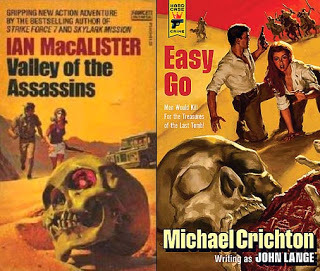
Ed here: Ben Boulden's Gravetapping http://www.google.com/search?client=s... never misses.
Here are a few excerpts from his piece on the forthcoming Chricton/Lange
novel. Be sure to read the whole thing.
Ben Boulden:
In the late 1960s and early 1970s Michael Crichton published eight thrillers under the pseudonym John Lange. The Lange novels are something very different than the science fiction Michael Crichton became famous for writing. They are thrillers more in the vein of Desmond Bagley, early Jack Higgins, and Gavin Lyall, and I like them much more than Crichton’s big bestsellers.
-
The Last Tomb is a thriller as thrillers were meant to be. It is quick, light, and entertaining as hell. There isn’t the slightest bit of character development, but it is populated with an exotic group of characters. There is the wealthy British nobleman financing the operation on a whim who travels with, at a minimum, two young ladies, there is the smuggler, and the thief. It is exciting, and with just enough of a twist at the end to bring a smile. -
The forthcoming Hard Case Crime edition, which will be published as Michael Crichton for the first time, has artwork strikingly similar to the old suspense novel Valley of the Assassinsby Ian MacAlister. -
The Last Tomb is a thriller as thrillers were meant to be. It is quick, light, and entertaining as hell. There isn’t the slightest bit of character development, but it is populated with an exotic group of characters. There is the wealthy British nobleman financing the operation on a whim who travels with, at a minimum, two young ladies, there is the smuggler, and the thief. It is exciting, and with just enough of a twist at the end to bring a smile.
Published on September 16, 2013 11:49
September 15, 2013
Robert J. Randisi The Honky Tonk Big Boss Boogie
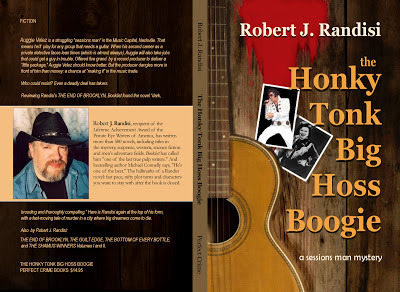
Carol and I started watching "Nashville" and I have to admit, though most soap operas make me cringe, I am now hooked. Sure there's a plot twist every three minutes, sure few of the characters ever behave rationally, and sure few scenes are longer than a hundred and eighty seconds (you can get whiplash with some of the scene changes) but most of it's fun in the way of meller-drama. My favorite is the little blonde woman who writes songs and who is now on her way as a singer as well; the ex-husband of star Connie Britton though he may be turning evil on us; the star's two teenage girls who are sweet and deserve far better fates and sing like angels.
The biggest problem I have with the show is how it portrays the business side of Nashville. Just when a scene seems about to give you the dirty low down (thank you Boz Scaggs for that phrase) the bombast comes on so strong it reduces the faux low down into something so simplistic even dumbos like myself already knew it. One bit of wisdom was that country folk don't like their stars to appear arrogant. Wow who wouldn't want to pay fifteen per cent for that kind of wisdom?
A far more enlightening take on the real Nashville can be found in the pages of Robert J. Randisi's The Honky Tonk Big Hoss Boogie. Randisi has obviously spent time there and has researched both the place and its people.
His protagonist, Augie Velez, is a session man who, when work is slow, doubles as a private detective. Randisi makes this two-job guy work because in both callings Velez is a low-key, hard-working guy like so many Americans do indeed work two (or three) jobs these days. The big difference being that Velez hopes someday to become a music star.
The set-up here is a nice one, A big time producer who could put five grand into Velez's pocket plus give him a real crack at moving up--way up--in the Nashville scramble. How can Velez refuse when the producer says both these things will happen only if Velex will deserve a package for him.
Velez knows better than to get involved of course. What kind of package could it be if it requires "delivering." Fed Ex and UPS and the U.S. Post Office deliver things but they don't "deliver" things. if you know what I mean. But none of them pay the deliverer five grand or dangle a major Nashvile in front of Velez.
I put this novel in the Randisi Top Ten because Augie is a unique character both personally and professionally. Augie's a little more laid back than many of Bob's protagonists and in guiding us through the world of session musicians I learned a good deal about an (to me) unknown realm. The same with Nashville itself. Who knew there was a Germantown in the city and that a place called the Drinkhaus was't a beer joint but one of the few cafes in it to serve breakfast?
And there are PI tips, too, that apply both to Nashville and anyplace else you care to name. Searching a room? "Start with the chests and dressers, always with the bottom drawers first, leaving them open. that way you don't have to waste time closing one drawer so you can lok in another."
A slick plot, fresh characters and a fascinating look at a giant industry and the city that's home to it...Bob Randisi at his absolute best.
Buy it!
Published on September 15, 2013 11:30
September 14, 2013
How Laura Lippman Changed Paths At 42 And Became A Bestselling Author

How Laura Lippman Changed Paths At 42 And Became A Bestselling AuthorThe Huffington Post | By Lisa BelkinPosted: 09/13/2013 10:47 am EDT
What does it take to get to the top -- without losing your center? Our “Making It Work” series profiles successful, dynamic women who are standouts in their fields, peeling back the "hows" of their work and their life, taking away lessons we can all apply to our own.Best-selling author Laura Lippmanis a reporter-turned-novelist, whose best known character, Tess Monaghan, is a reporter-turned-sleuth. Lippman spent 20 years as a journalist, the last 12 at the Baltimore Sun, writing mysteries in her "spare time" until finally turning exclusively to fiction in 2001 after she'd already finished seven novels in as many years.She didn't break pace when she married fellow writer David Simon (the creator of such TV series as "The Wire," and "Treme,") nor after she moved with Simon and her step-son to New Orleans, or for the birth of their daughter three years ago, making Lippman a first time mom at age 51. To write a book a year, she says, you simply focus on 1000 words a day.Why do you do the work you do?It doesn't feel like work. Yes, I have days that are difficult, but I'm sitting in a chair, making up stories. It's what I did for fun as a kid, whether with Barbies or stuffed animals.What work would you do if not this?If I had to find a job right now, a daunting prospect given my age, I think I would be drawn to social work. I covered what was known as the social services beat at the Evening Sun and it was probably my favorite beat. I just think I might actually be good at helping people, although that could be wishful thinking.
Did you wind up in this profession by accident or design? Design. I set out to become a crime writer. At first, it was because it seemed like a less presumptuous goal. After I started writing crime fiction, I said to myself, "I may be limited, but the genre's not. There's no reason to change genres if I'm happy writing what I write." And I am. My work has changed a little over the years. I'm less interested in straight-forward whodunits, although there is some kind of mystery involved. I kill fewer and fewer people per book and it's often off the page. But I'm a crime novelist, no doubt about it.Who is your role model? Hmmm. I'm drawing a big blank. It would have to be a writer who's super-prolific but also has a big range, who has written well into his/her, um, maturity. I'll say Donald Westlake, although it's killing me that I can't think of a woman who fits this description. If I say Anne Tyler people will think I'm yearning for mainstream literary success. There's nothing wrong with yearning for mainstream literary success, but it's a losing proposition. You'll always be looking up the mountain. So I don't caught up playing the game in which I try to claim to be something other than a writer in a popular genre. Some popular writers ended up being among our greatest writers. And you know what? I"m probably not going to be thought of that way. But we're all dead by the time this stuff shakes out, so who cares?Is there still a glass ceiling? Have you hit it? That's complicated. If we judge by sales, there is nothing holding back women writers. There are many who are perennial best-sellers. But at the top of the top of the top, where one finds a small number of people who enjoy financial rewards and burnished reputations -- I feel that's harder for women to achieve. Especially if they write about women.Do women have a responsibility to help other women at work? Yes. Fiction needs writers and readers, and writers should cultivate both. But I feel a special obligation to help women because of the issues cited above.for the rest go here:
http://www.huffingtonpost.com/2013/09...
Published on September 14, 2013 14:34
September 13, 2013
Compound Murder by Bill Crider

I once saw this series compared to "the Andy Griffith Show." I suppose there are similarities in the small-town (Texas) atmospherics and a few antic characters but Bill Crider's version of the turf is much more sophisticated, funnier and snarkier. There's a definite wry even judgmental take on the this particular town.
Compound Murder is one of my favorite of the series because the plot--an English professor is found dead; later decreed murdered--has more than its share of twists and surprises and because between Academics and Survivalists who believe that Obama has hooves and a tale, Crider focuses some very sharp, witty writing on these respective worlds. Not to mention sneaking in some pop culture references
that really work.
Professor accused Survivalist's son of cribbing a paper he handed in. The son and the Prof got into a heated argument about it. Suspect number one is introduced. Several more to come, of course, each well-endowed with motive and denial. Wellington was not what you might call universally loved. Crider sneaks in a very nice procedural amidst the comedy and clamor.
Favorite scene: Sheriff Dan Rhodes' first visit to the Compound where the Survivalist chief dangles an AR-15 while he talks (he reassures Rhodes that he only uses it for hunting; that's reassurance?) and four dogs ("Leopard hounds") who don't seem the cuddly type despite being told otherwise.
As I said at the top, this is one of my favorites of the series. But then I like all of them. These deserve time on the best-seller lists.
Published on September 13, 2013 11:26
September 12, 2013
Forgotten Books: Conan Doyle: Detective by Peter Costello
[image error]
Conan Doyle: Detective by Peter CostelloI always thought that Arthur Conan Doyle was a pretty cool guy. When I was young I was all caught up in almost otherworldly portrait he gave us of Victorian London and environs. The fog, the hansom cabs, the echoing footsteps down the dark alleys, the pitiful ones of Whitechapel, the self-indulgent ones of the aristocracy. And then when I got older and had more appreciation of what it was like for a father to lose a son, the way Doyle turned to mentalism of various sorts...
The one aspect of the Doyle story I'd never paid much attention to was his very real interest in true crime cases. As Erle Stanley Gardner woukd do several decades later, Doyle helped clear innocents and thus help them escape the gallows. And he worked with police from a variety of cities, towns and even other countries when they asked his opinion or advice on matters concerning open cases.
All this is documented in a fine new book Conan Doyle: Detective by Peter Costello (Carroll & Graf, $15.95) that moves as swiftly as a Doyle story while offering us a look at a Doyle most of us have ever encountered, even in some of the better Doyle biographies.
There are chapters on six of the UK's most famous cases including Crippen, Jack The Ripper and the Irish Crown Jewels. Even when Doyle was wrong in his conjectures, his process of deduction is fascinating to follow. Likewise, even in cases of lesser fame, Costello sets all the crimes in a context that helps give us a vivid sense of the era.
A real treat for several audiences--those who love Holmes, those fascinated with Doyle himself, those interested in the formation of modern crime solving techniques, and those (and there seem to be many) who wished they'd lived in the time of Queen Victoria.
Published on September 12, 2013 12:45
September 11, 2013
Ron Faust

Ed here: I wrote about Ron Faust the other night. He really was one of the finest writers of my genration. Ben Boulden wrote me tonight about my post the other day. I'll run a bit of it here but be sure to go over to Gravetaping for the entire piece (written before he heard from Faust's agent).
Ed,I thought you might like to know I heard from Ron Faust's literary agent, Jim Donovan, and he verified Ron died in 2011. I don't know the details of his death (I asked in a follow up email), but JACKSTRAW is his final novel.I also posted a short essay and his bibliography at Gravetapping.Ben
Ron FRRFRon Faust: An Unforgettable WriterRon Faust is the best writer you have never heard of. He was less
than prolific, publishing 15 novels over four decades, but the
novels he wrote were something special. He was compared
to Ernest Hemingway, Hunter S. Thompson, and
Peter Matthiessen by critics, but he never got the break
he needed, or his writing deserved. His work leaned t
oward thrillers, but there was a substance, an atmosphere,
to his novels, which is uncommon in the genre.
Mr Faust’s work was published in bursts. His first
six novels were published between 1974 and 1981;
the first two titles were published in hardcover by
the Bobbs-Merrill imprint Black Bat Mystery, and
the remaining four appeared as paperback originals from
Fawcett Gold Medal and Playboy Press.
The next five titles, probably his most commercially
successful, were published by TOR and its imprint
Forge between 1993 and 2001; each was published in
hardcover, and the first three were also published in mass
market. Mr Faust’s name left the bookstore shelves for a
few years until Bantam published three novels featuring
Dan Shaw, a law student and working paralegal who a
lways found trouble, in 2004 and 2005. The Dan Shaw
titles have been favorably compared with John D’s Travis
McGee, and he is Ron Faust’s only recurring character.
His most recent title is an adventure novel titled Jackstraw,
which was published earlier this year as a trade paperback
by the independent Turner Publishing, and I’m pretty
certain it will be his last. The copyright for Jackstraw is
held by Mr Faust’s literary agent, and while I was unable
to find an obituary, get a response from his agent,
or find anyone who knew Ron Faust more than in
passing, I have the rotten feeling (and I hope I’m wrong)
Mr Faust is dead.
for the rest go here:
http://gravetapping.blogspot.com/
Published on September 11, 2013 17:05
September 10, 2013
SHOTGUN HONEY Volume 2
[image error]
From Ron Earl Phillips and the editors at the e-magazine Shotgun Honey,
an anthology of all new stories by some of the top writers in the crime and noir field.
[image error]
Print: http://amzn.com/0615875513
Kindle:http://amzn.com/B00F3AUYD0
From Ron Earl Phillips and the editors at the e-magazine Shotgun Honey,
an anthology of all new stories by some of the top writers in the crime and noir field.
[image error]
Print: http://amzn.com/0615875513
Kindle:http://amzn.com/B00F3AUYD0
Published on September 10, 2013 12:10
September 9, 2013
FANTASTIC interview with Universal-International Genre Star Julie Adams
 Van Helfin with Julie Adams
Van Helfin with Julie Adams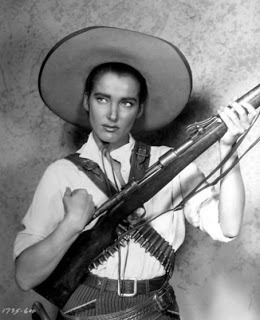
Julie Adams
From Henry's Western Round-Up
MONDAY, SEPTEMBER 9, 2013INTERVIEW WITH JULIE ADAMS, UNIVERSAL’S QUEEN OF THE WEST, AT 3-D EXPO!
Conducted September 7th, 2013
For Hollywood, the 1950s and 60s were the era of the blonde bombshell. But it was also a time of some striking brunettes, and few made a more lasting impression than the lady whose long black tresses and white one-piece swimsuit made her Fay Wray to THE CREATURE FROM THE BLACK LAGOON, Julie Adams.
But Julie Adams was much more than catnip to a 3D lizard; a stunning beauty with a sultry voice that could portray sincerity or scheming, she always portrayed intelligence. She was the thinking man’s western beauty, and her characters were rarely the type who just reloaded while her man fired out of the cabin window. In at least fifteen Western features and dozens of Western TV episodes, she played the sort of strong three-dimensional women that previously only Barbara Stanwyck got to play – and sometimes she played them withBarbara Stanwyck!
And speaking of three-dimensional characters, she starred in two 3D movies, both of which are being featured in the WORLD 3D FILM EXPO III, which opened on Friday night at the Egyptian Theatre in Hollywood, and will run for ten days. CREATURE FROM THE BLACK LAGOON played on Saturday night, and on this Friday afternoon at 3:30 pm, WINGS OF THE HAWK will be shown. This Budd Beotticher-directed classic is rarely seen in any version, and it’s been years since it played in 3D. Miss Adams, who stars with Van Heflin in the film, will attend, and take part in a Q&A. She will also be signing her autobiography, THE LUCKY SOUTHERN STAR – REFLECTIONS FROM THE BLACK LAGOON, which I will be reviewing here shortly. In it she discusses, along with CREATURE, and her other films, all of her Western movies, and many of her TV appearances.
After some parts in early live TV, and before she became a contract star at Universal, she cut her celluloid teeth working in Westerns for the small independent, Lippert Pictures. She graciously spent an hour talking to me until she had to rush off for her BLACK LAGOON screening.
HENRY PARKE: Miss Adams, it’s great to talk to you. I’ve been a fan of yours for a long time, and oddly enough, I like your westerns even more than I like THE CREATURE FROM THE BLACK LAGOON.
JULIE ADAMS: Well that’s great, because I love doing westerns. I loved seeing western movies when I was a kid, so my dream came true, and I actually got to act in westerns, and ride those beautiful horses.
HENRY: Before you started acting in them, what westerns did you like in particular?
JULIE: I loved them all. I went to Saturday westerns mostly, with different stars, but I was more in love with the horses than the actors. I loved the stories, I loved the outdoors. I just loved it all.
HENRY: As far as I know, the first western you did was with Don ‘Red’ Barry, THE DALTON GANG, in 1949.
JULIE: You’re absolutely right.
HENRY: Don Barry’s always been a personal favorite of mine. What was he like to work with?
JULIE: I loved to work with him; he was wonderful. A very nice fellow, extremely polished in the western genre.
HENRY: You did a half dozen Westerns for an independent company, Lippert Pictures,in 1950. I understand that they were shot simultaneously, with the same casts. They’d do the saloon scenes for all six films, then the ranch house scenes for all six, and so forth. That must have been a crash course in acting.
JULIE: Well, it was exciting. Because we did six or seven westerns in just five weeks. So it was exciting, and it was extremely concentrated. It was great training for me, because you didn’t have time to think about things too much; just went and did it! (laughs) I went out and took some riding lessons before I started. Within the western genre, the horses that are trained for westerns are so easy to ride; you can guide them, and they respond to anything you do, whichever way you want to go. Horses can really make you look good.
HENRY: In 1952 you were under contract to Universal Pictures, and you starred with Jimmy Stewart in one of the legendary Stewart and director Anthony Mann collaborations, BEND OF THE RIVER. Which was quite a substantial step up from Lippert. What was Anthony Mann like to work with?
JULIE: Anthony Mann was really a wonderful director. He knew what he was doing, and he knew what he wanted, and he made you feel very secure. You had a good man at the head of the chain. Everything he directed you to do made sense. He really knew the western genre so well. I was very happy working with him; I loved doing BEND OF THE RIVER, and of course to work with James Stewart was great.
MUCH MORE TO COME:http://henryswesternroundup.blogspot....
Published on September 09, 2013 11:47
September 8, 2013
What Doesn't Kill Her by Max Allan Collins
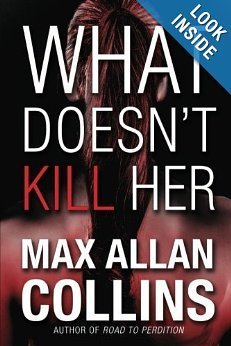
What Doesn't Kill Her is a fresh and compelling spin on the serial killer trope. You know that immediately because the opening chapter is one of the best sustained pieces of suspense writing I've read in a long time.
The novel itself has a cast of characters who are fresh and engrossing from the start. The protagonist Jordan Rivera witnesses, at sixteen, the savage murders of her parents and her brother at the hands of a killer. He spares her life but with a bizarre request.
We next meet her in a mental hospital. Collins does an extraordinary job with creating a believable place where good people try to help people whose lives have been devastated by violent crime. No hokey Madhouse stuff.
Another moving story point is that Jordan has not spoken in the decade she's been here. There's a powerful scene where confrontation with another patient gives her voice again. And then right after that
Jordan hears of a serial killer's crime that convinces her that the one who killed her family is still slaughtering people.
From here, Collins' gifts us with a twist that would make for a good movie. Jordan and her hospital inmates try to figure out how and where the killer is operating the Cleveland area here. They are joined in the effort by a boy Jordan not only knew but had a crush on in school. Now Mark Pryor in a homicide detective and they work together.
I read this in two sittings and enjoyed seeingMax Collins at his best. Not only is the story a page tuner but Jordan Rivera is one of Collins' most fascinating characters.
Published on September 08, 2013 12:55
September 7, 2013
Noir City - Peggie Castle
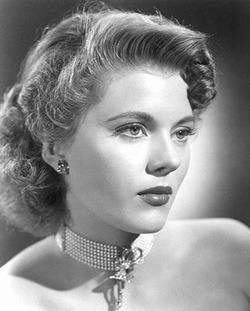
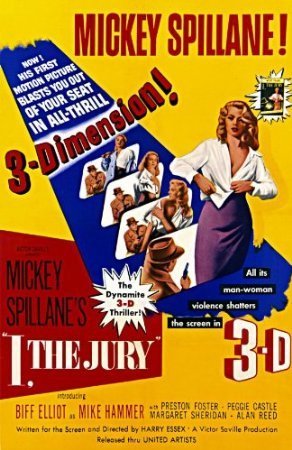
Ed here: Jake Hinkson's piece is one of the finest takes on an actresses' life I've ever read. Peggie Castle has always fascinated me. As Jake says there was more to her than simple beauty, a complex, even dark side that informed her work as an actress--the few times Hwood gave her a chance.
You can get Noir City from The Film Noir Foundation. It's always a must-read.
http://www.filmnoirfoundation.org/con...
The Girl They Loved to Kill the many deaths of Peggie Castle Jake Hinkson
In Hollywood’s Golden Age, beauty was turned into a commodity, one found in abundance and renewed with each out-of-town bus. Thousands of lovely young women cycled through the system, had their physical attributes capital ized upon, and wound up back on the street with little more than the handful of cash it would take to get back home. Of these unlucky multitudes, few lived long enough to see themselves become a new kind of star: the rediscovered film noir icon, the object of scholarly study and geek adoration.
All scholarship and trivia aside, however, film noir is, in large part, a cult devoted to rescuing forgotten women from the obscurity that once seemed to be their final destiny. Because noir preserves these women primarily as symbols of sex, their onscreen legacy is lit with an especially erotic flame. This is certainly true of Peggie Castle, who came into the business as an 18-year old starlet, achieved moderate success as a femme fatale, and then found herself out of work by the age of 35. As a result, the images we have of her comprise a largely sexualized picture of a woman in her early twenties. What makes her legacy problematic, and fascinating, is the frequency with which this pretty picture is darkened by images of punishment and violence. Even in the fragile immortality granted by film, Peggie goes on dying, martyred again and again in misogynist fantasies of eroticized sadism.You may not remember her. Most people don’t. She was never really a star, not even in the insular world of film noir, where she was usually cast as an easily dispos- able sex object. In her most famous scene, she was shot to death while doing a striptease. It was that kind of career.
Though a lot of actresses played the doomed bad girl, Peggie Castle seemed to embody the ethos somehow. Something about her seemed dangerous—which is another way of saying, perhaps, that something about her threatened men. With her low, smoky voice and skeptical green eyes, she wasn’t hot, she was cool. She never seemed to lose con- trol. Her sensuality always seemed to be hers to do with as she pleased, a tool to get what she wanted. If this was her innate quality as an actor, then she was made to suffer for it in film after film.
That cool quality seemed to reflect the real woman as well. Well-educated and ambitious, she had a caustic wit about most things, and she evinced few romantic illusions about the business she’d chosen for herself. “The difference between an old fashioned kiss and a movie kiss,” she said once, “is about 1500 feet of film.”
She lived a disconnected life from the beginning. Born Peggy (with a Y) Thomas Blair on December 22, 1927 in Appalachia, Virginia, she was the daughter of an industrial efficiency expert named Doyle Blair and his wife Elizabeth “Betty” Guntner. Doyle’s job kept the Blairs on the road with their only child. “The harder an efficiency expert works the sooner he’s out of a job,” she would later observe. “I attended 22 different schools while traveling from city to city with my father...so I’ve got a ‘home town’ story for dozens of reporters.”
for the rest of this story and many other fine ones go here:
http://www.filmnoirfoundation.org/con...
NOIR CITYSummer 2013SPECIAL FEATURES10 Two-Bit Crimes how comics became “Adult entertainment” Steve Kronenberg27 A Bird in the Hand the comics claim a classicSteve Kronenberg29 Louis Faurer overlooked master of “new York noir” Don Malcolm32 Julius Knipl ben Katchor's lost-and-found, Pulp-Surrealist new York Don Malcolm37 Noir Without Words Wordless novels, the Great depression, and the Passion of dark Journeys Don Malcolm42 The Girl They Loved to Kill the many deaths of Peggie castle Jake Hinkson54 Dying by the Numbers Force of Evil and the death of enterprise Studios John McElwee*clicking title jumps to article 3 noircitY i Summer2013 i filmnoirfoundation.orgDEPARTMENTS5 Letter from the Publisher 7 This Just In...the latest news from the film noir foundation108 I Wake Up Screening Stoker and The Place Beyond the PinesKelly Vance110 Now on DVD Side EffectsAnastasia Lin111 Book Reviews 114 Keenan’s Korner on Crime FictionFiction and Mixology courtesy of Vince Keenan116 Real Life Noir True life images from vintage crime blotters of the pastCover and TOC image © 2013 by William M. Gaines, Agent, Inc.®1061 Dark Roots christopher nolan and noirJason Ney73 The Edge of Sleaze b-noir, exploitation, and the 1960s Don L. Stradley86 Noir in the Sixties the mainstream trickles outDon Malcolm95 All the World's a Ring boxing noir on StageDan Akira Nishimura97 Form and Function documenting the noir metropolis via the Southern california edison Archive Dan Akira NishimuraINTERVIEWS70 Avatar of Future Noir An interview with Warren hammond Jason Ney99 Laurie Pincus A child's Garden of noirDan Akira Nishimura102 Mark Osteen Gives it Up! An interview with the Author of Nightmare Alley Anne M. HockensREGULAR FEATURES104Museum of Film NoirCarl Steward
BE SURE AND GET YOUR COPY
Published on September 07, 2013 13:55
Ed Gorman's Blog
- Ed Gorman's profile
- 118 followers
Ed Gorman isn't a Goodreads Author
(yet),
but they
do have a blog,
so here are some recent posts imported from
their feed.



